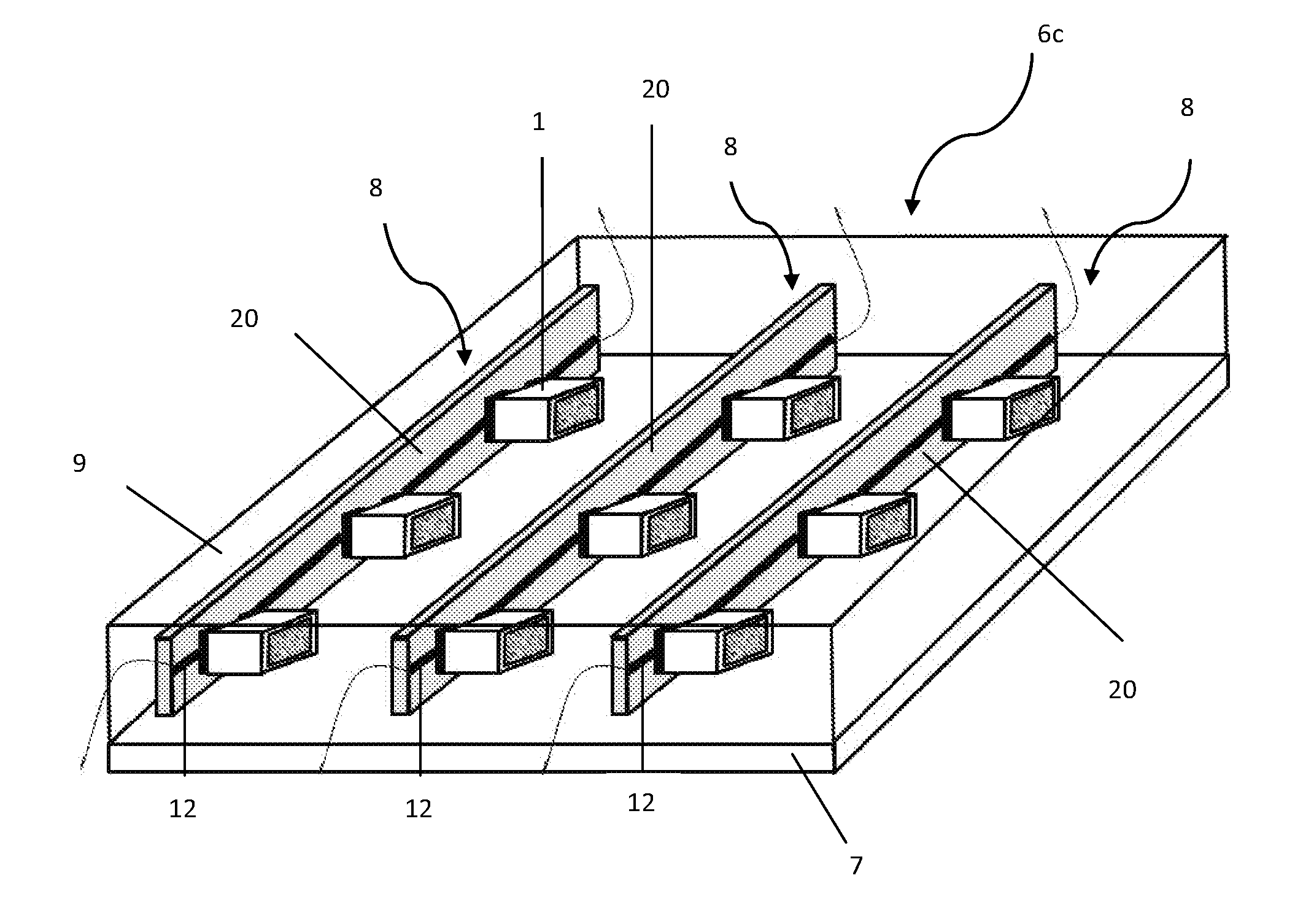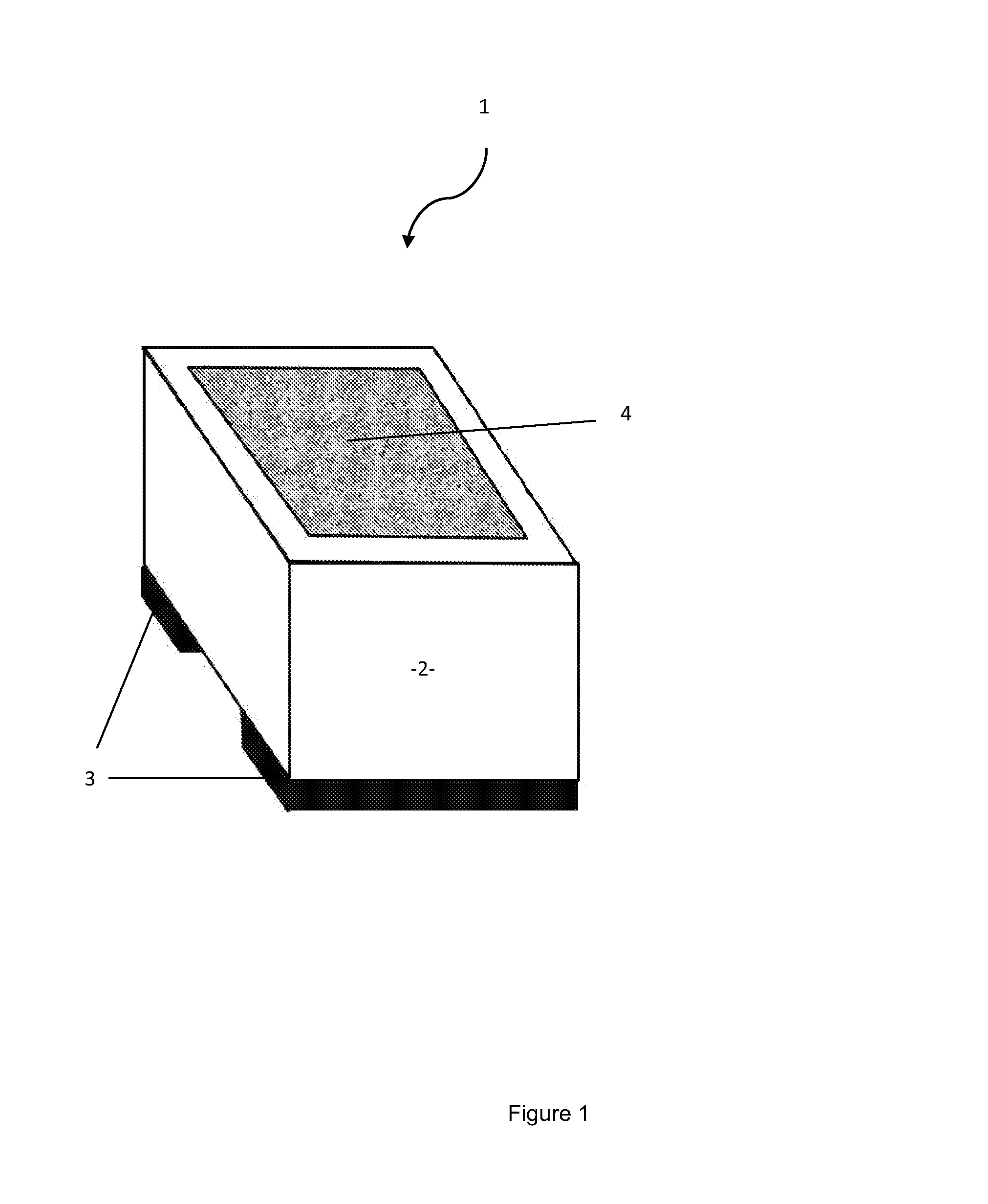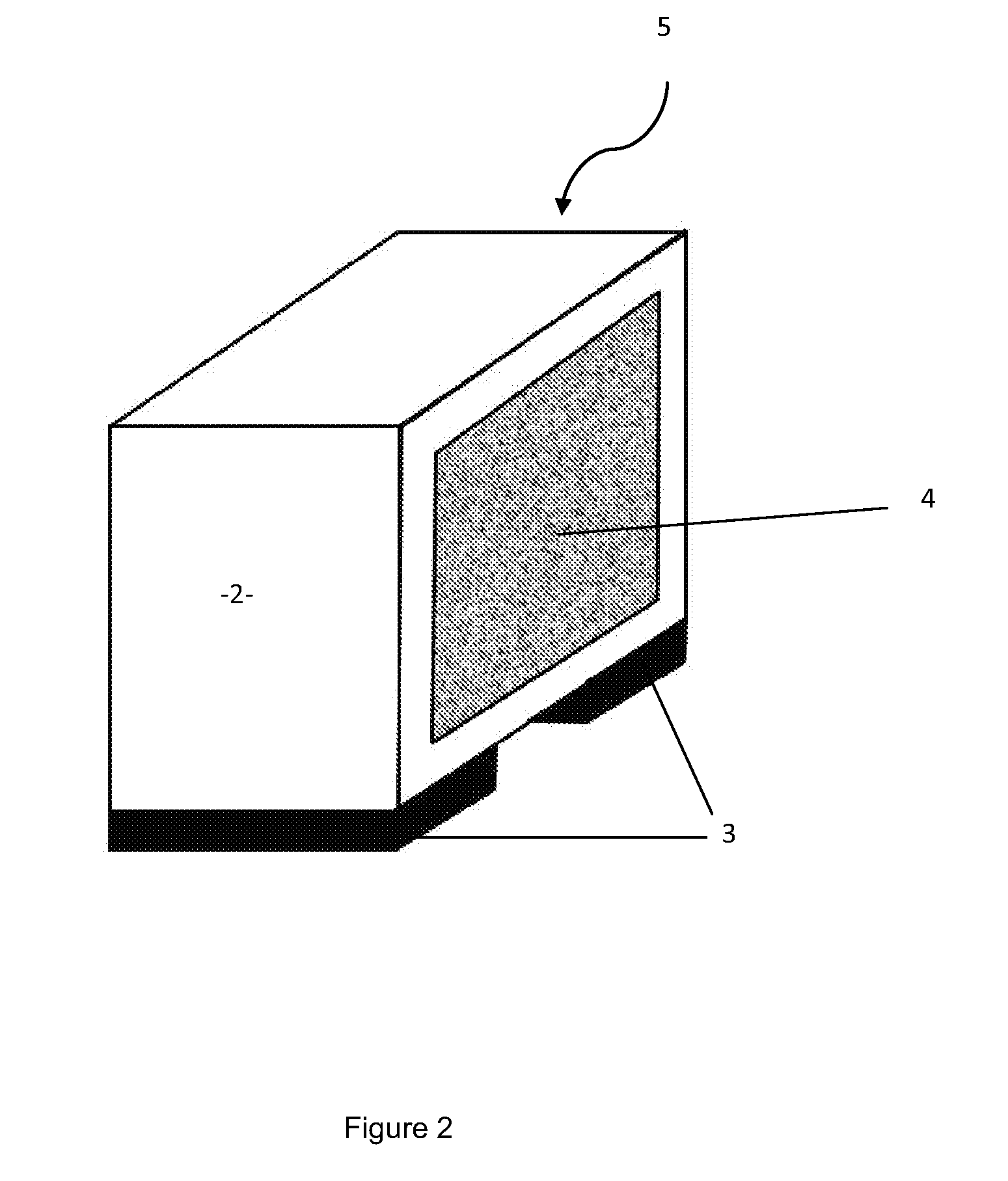Lighting panel
- Summary
- Abstract
- Description
- Claims
- Application Information
AI Technical Summary
Benefits of technology
Problems solved by technology
Method used
Image
Examples
Embodiment Construction
[0044]Referring to FIGS. 3 and 4, a side view and a schematic representation, respectively, of a lighting panel 6 in accordance with an embodiment of the present invention is presented. The lighting panel 6 can be seen to comprise a substrate 7 made from a transparent polymer sheet, such as polyester or polycarbonate and having a refractive index ns between 1.50 and 1.61.
[0045]Located on top of the substrate 7 are three, 3×1 arrays of light sources 8, further details of which are provided below.
[0046]Covering the 3×1 arrays of light sources 8, and the remaining area of the top surface of transparent substrate 7, is a guide layer 9, also formed from a transparent plastic polymer e.g. silicone, and having a refractive index ng between 1.41 and 1.56. The refractive indices of the transparent substrate and the transparent guide layer 9 are selected such that they satisfy the inequality ns≧ng. As a result, and as shown in FIG. 3, light 10 generated by the 3×1 arrays of light sources is i...
PUM
| Property | Measurement | Unit |
|---|---|---|
| Electrical conductor | aaaaa | aaaaa |
| Transparency | aaaaa | aaaaa |
| Refractive index | aaaaa | aaaaa |
Abstract
Description
Claims
Application Information
 Login to View More
Login to View More - R&D
- Intellectual Property
- Life Sciences
- Materials
- Tech Scout
- Unparalleled Data Quality
- Higher Quality Content
- 60% Fewer Hallucinations
Browse by: Latest US Patents, China's latest patents, Technical Efficacy Thesaurus, Application Domain, Technology Topic, Popular Technical Reports.
© 2025 PatSnap. All rights reserved.Legal|Privacy policy|Modern Slavery Act Transparency Statement|Sitemap|About US| Contact US: help@patsnap.com



